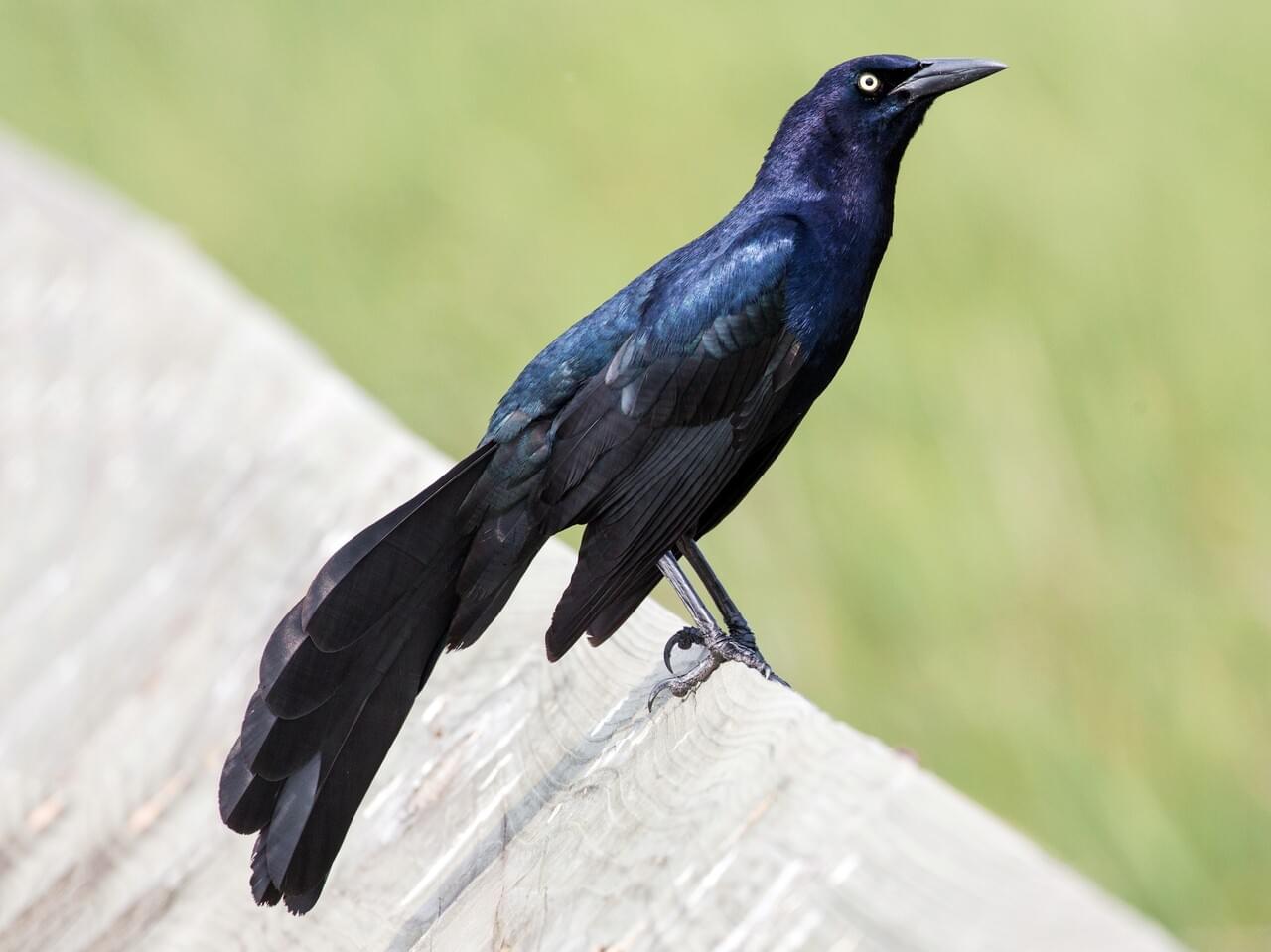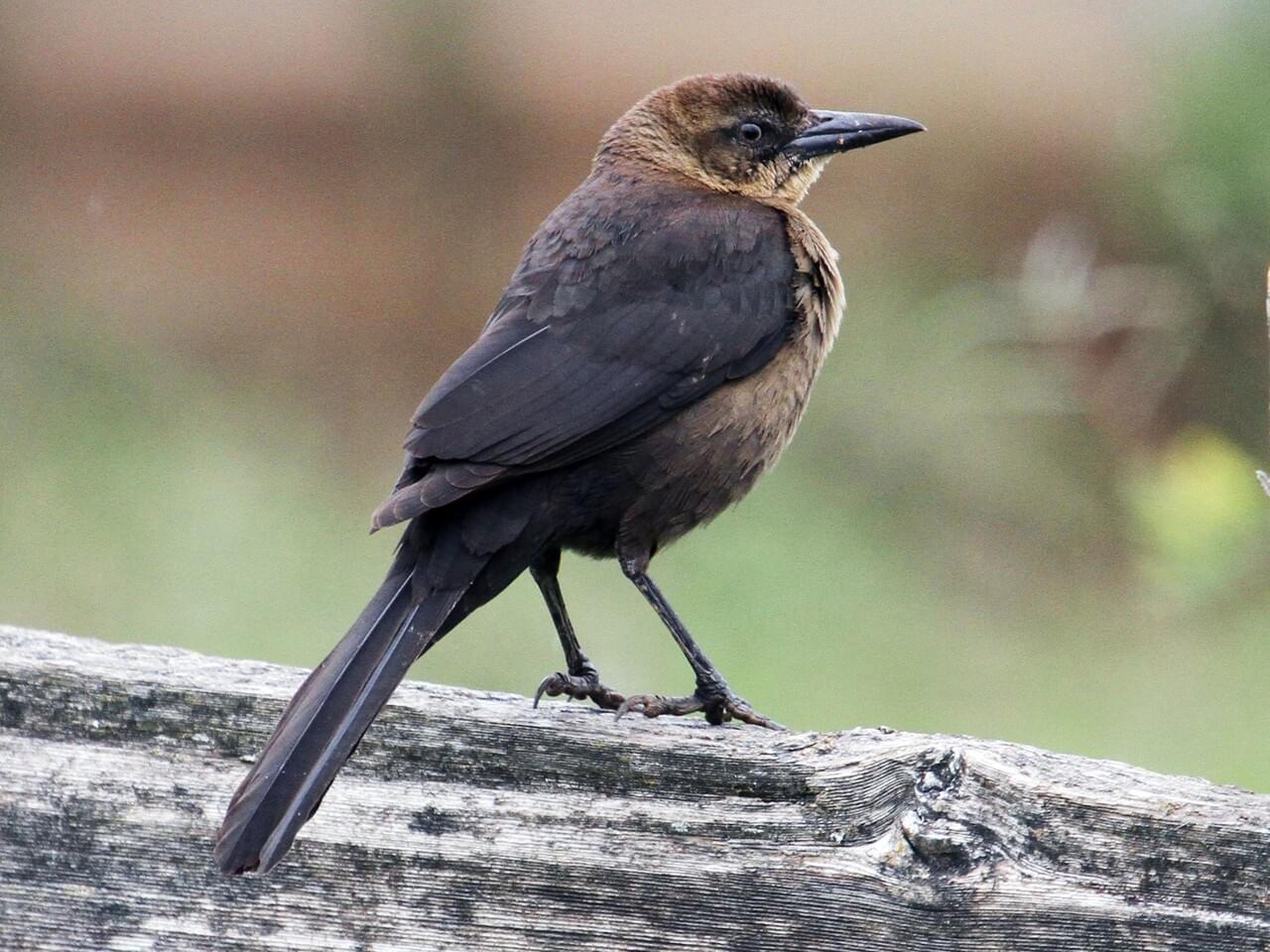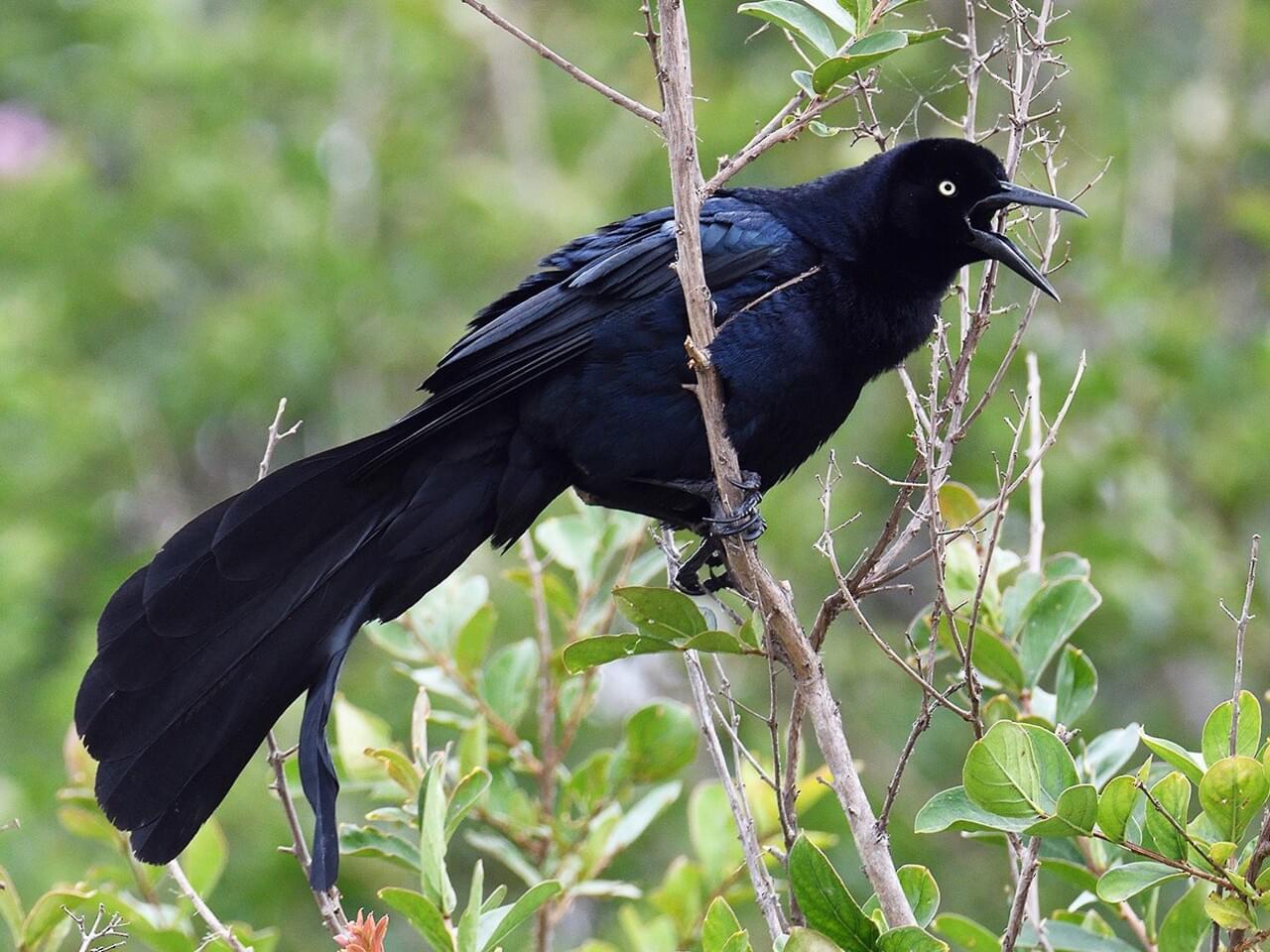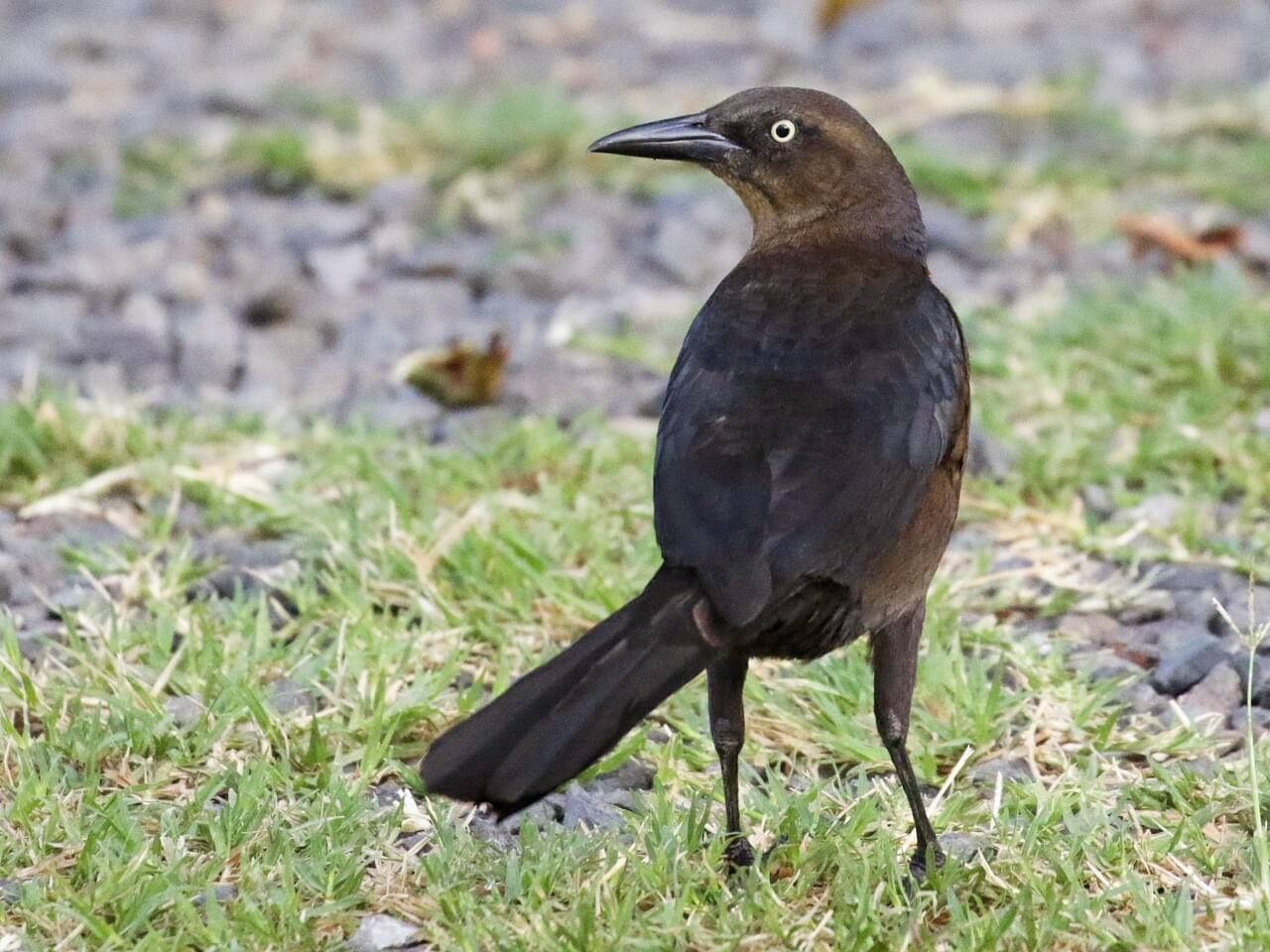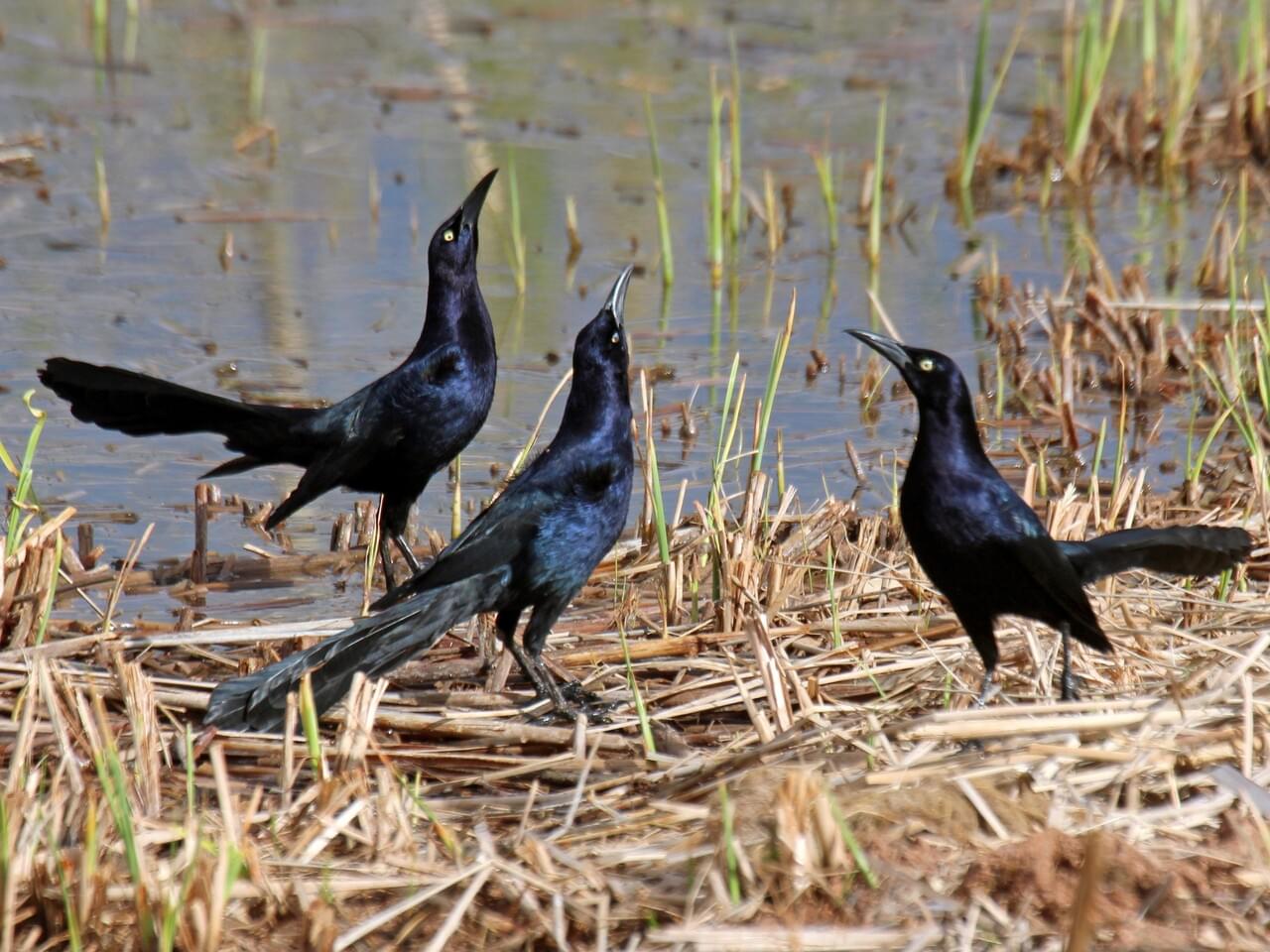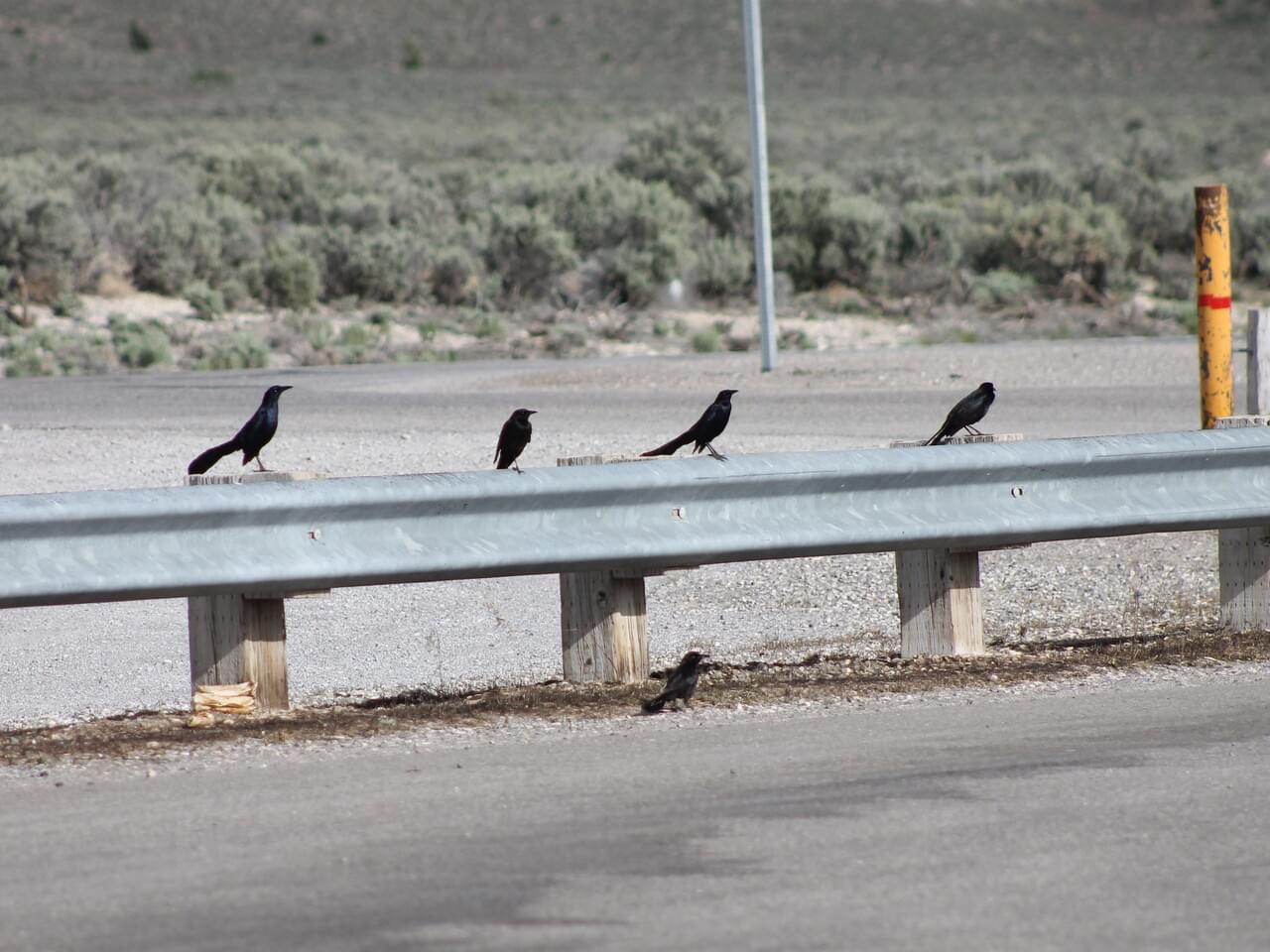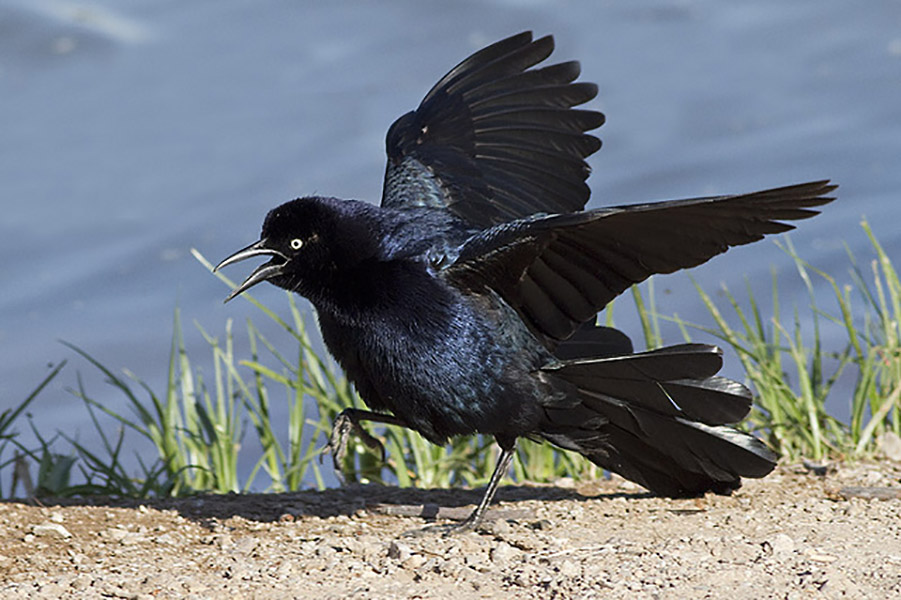 Photo ©
Ned Harris
Photo ©
Ned Harris
Great-tailed Grackle
Regional Species
A big, brash blackbird, the male Great-tailed Grackle shimmers in iridescent black and purple, and trails a tail that will make you look twice. The rich brown females are about half the male’s size. Flocks of these long-legged, social birds strut and hop on suburban lawns, golf courses, fields, and marshes in Texas, the Southwest, and southern Great Plains. In the evening, raucous flocks pack neighborhood trees, filling the sky with their amazing (some might say ear-splitting) voices.
Range
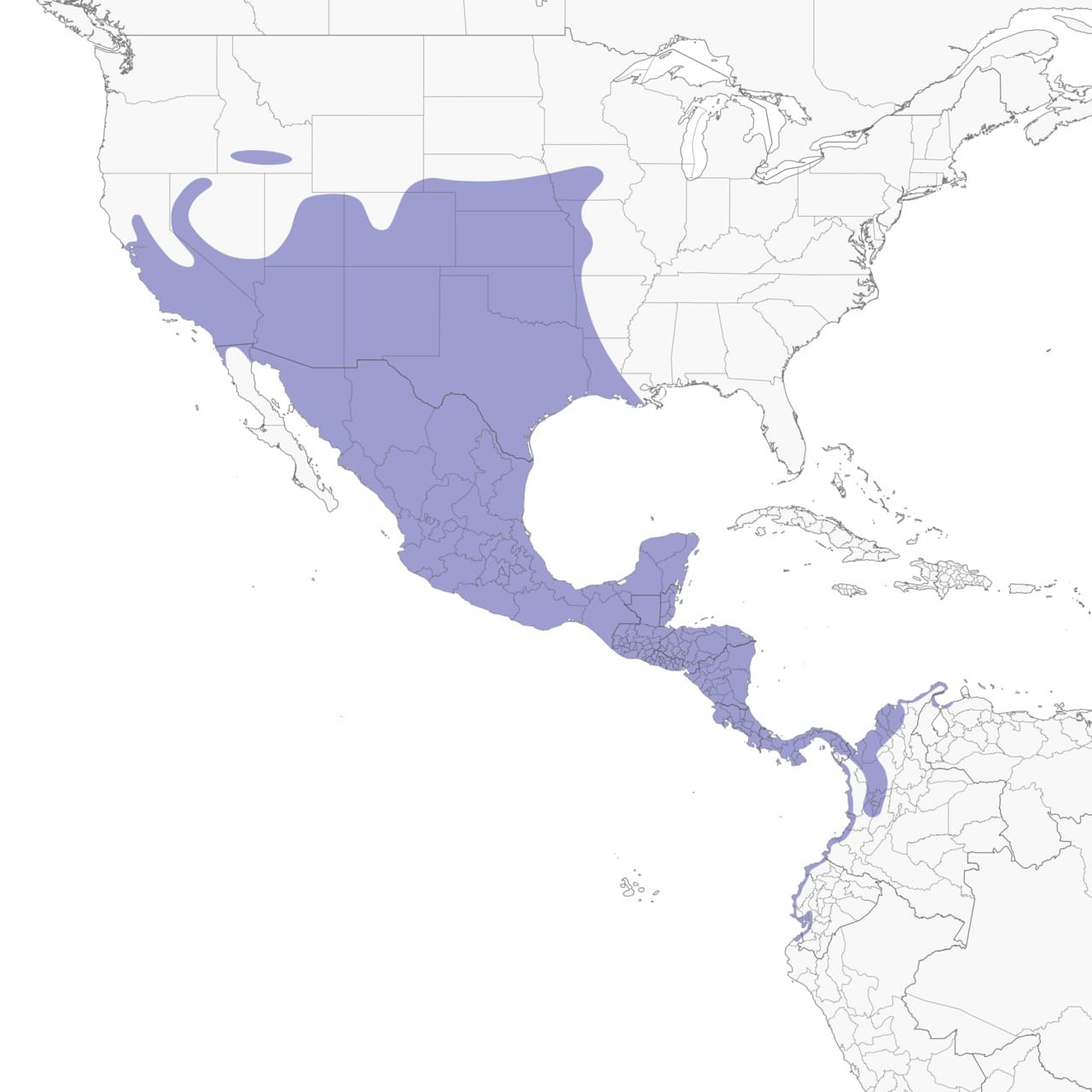
Habitat
Where people have gone, Great-tailed Grackles have followed: you can find them in both agricultural and urban settings from sea level to 7,500 feet that provide open foraging areas, a water source, and trees or hedgerows. In rural areas, look for grackles pecking for seeds in feedlots, farmyards, and newly planted fields, and following tractors to feed on flying insects and exposed worms. In town, grackles forage in parks, neighborhood lawns, and at dumps. More natural habitats include chaparral and second-growth forest. You’re unlikely to see them in dense forests, or in deserts or prairie habitats that lack access to water.
Food
Great-tailed Grackles eat plant material year round, including grains such as corn, sorghum, and oats as well as fruits. In summer and early fall, animals make up half or more of their diet, with females eating up to 80% animal matter. Prey includes grasshoppers, beetles, spiders, bees, wasps, snails, worms, slugs, and moths. Grackles also feed on tadpoles, frogs, lizards, snakes, fish, and small mammals such as mice and shrews, as well as bird eggs and nestlings.
Behavior
Great-tailed Grackles are loud, social birds that can form flocks numbering in the tens of thousands. Each morning small groups disperse to feed in open fields and urban areas, often foraging with cowbirds and other blackbirds, then return to roosting sites at dusk. This evening routine includes a nonstop cacophony of whistles, squeals, and gunfire-like rattling as birds jostle for preferred positions. In early spring, males establish breeding territories in one or more trees, which they fiercely defend against other males. Territorial “ruff-out” displays of erected feathers, fanned tail, and bill held skyward may erupt into wrestling matches, with competing males locking talons and rolling on the ground. Dominant males mate with one or more “social mates” within their territory and may try and mate with other females, while females have a single social mate but may copulate with other males. Females brood and feed the chicks, which the male defends from intruders.
Nesting
Females weave a bulky cup of grasses, bark strips, weeds, rushes, and other plants, anchoring the rim to upright twigs or small branches. Weaving material can include plastic strips and bags, ribbons, flagging tape, feathers, and string. She lines the nest cup with mud or cow dung and adds a soft inner layer of fine grasses. Building the nest can take 5 to 17 days, with the male sometimes guarding the site from other females trying to pilfer nesting material. The finished nest is 4 to 13 inches deep and 7.5 inches across, with a cup measuring 2 to 4 inches deep and 4 inches wide.
Appearance
Typical Sound

© Bob McGuire / Macaulay Library
Size and Shape
Male Great-tailed Grackles are long-legged, slender blackbirds with a flat-headed profile and stout, straight bills. The male’s tapered tail is nearly as long as its body and folds into a distinctive V or keel shape. Females are about half the size of males with long, slender tails.
Color Pattern
Male Great-tailed Grackles are iridescent black with piercing yellow eyes, and black bills and legs. Females are dark brown above, paler below, with a buff-colored throat and stripe above the eye. Juveniles have the female’s dark brown plumage, with streaked underparts and a dark eye.
Plumage Photos
Similar Species
Boat-tailed Grackles overlap with Great-tailed Grackles only in coastal Texas and Louisiana. They live mainly in coastal saltmarshes, rarely moving inland (except in Florida where they are widespread across the peninsula). Boat-tailed Grackles have a much more rounded head, whereas Great-tailed Grackles have a sloping, flat crown. Females are best told apart by eye color: Great-tailed has yellow eyes; Boat-tailed has dark eyes. But beware of juvenile Great-tailed Grackles; their eyes change from amber to yellowish over the course of the first fall and winter. Common Grackles are substantially smaller, with shorter, flatter tails than Great-tailed Grackles, and the females look the same as the males. You may find Bronzed Cowbirds and Brewer’s Blackbirds mixed in with flocks of Great-tailed Grackles, but these are much smaller blackbirds with more compact proportions and shorter tails.
Did you know?!
- In winter, enormous flocks of both male and female Great-tailed Grackles gather in “roost trees.” These winter roosts can contain thousands of individuals, with flocks of up to half a million occurring in sugarcane fields in Texas’s Rio Grande Valley.
- In 1900 the northern edge of the Great-tailed Grackle’s range barely reached southern Texas. Since the 1960s they’ve followed the spread of irrigated agriculture and urban development into the Great Plains and West, and today are one of North America’s fastest-expanding species.
